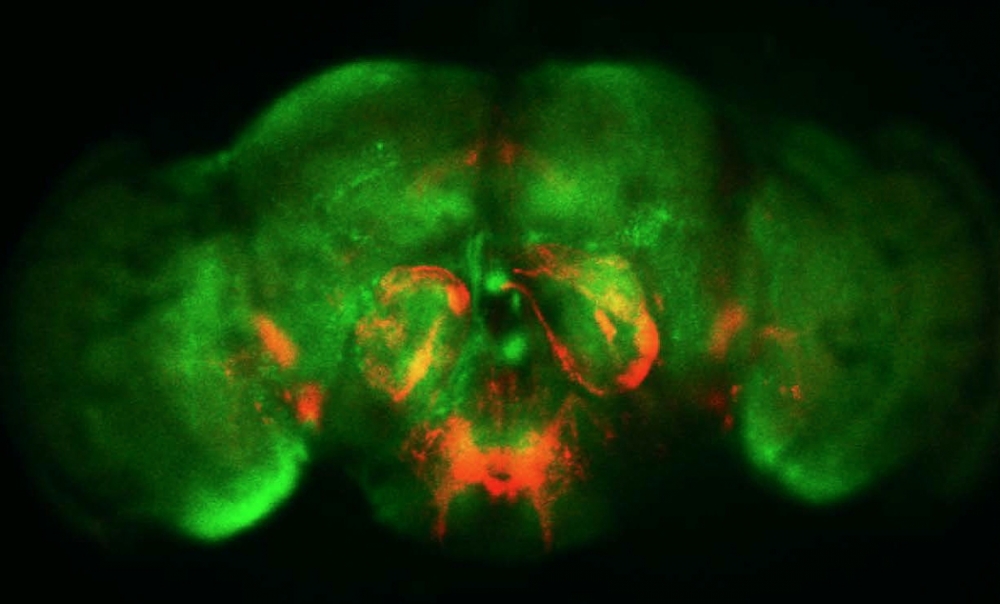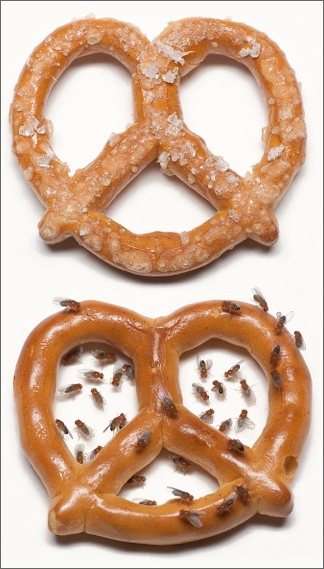
Researchers Identify the Mechanisms Underlying Salt-Mediated Behaviors


Next time you see a fruit fly in your kitchen, don't swat it. That fly could have a major impact on our progress in deciphering sensory biology and animal behavior, including someday providing a better understanding of the human brain.
UC Santa Barbara researchers in the Department of Molecular, Cellular, and Developmental Biology (MCDB) and the Neuroscience Research Institute (NRI) have been studying the mechanisms underlying salt taste coding of Drosophila (fruit flies). And they have made some rather remarkable discoveries. Their findings appear today in the journal Science.
The work done by Craig Montell, Duggan Professor of MCDB and Neuroscience, and his team not only explains the fundamental question of how an animal chooses low salt over high salt, but also unravels the mechanism for how gustatory receptor neurons (GRNs) are activated by salt, an essential nutrient for all animals, including humans.
The fact that animals are attracted to low-salt foods and reject food with high salt is well known. However, it remains unclear how low-salt and high-salt taste perceptions are differentially encoded in gustatory receptor cells, and how they induce distinct behavioral responses. The researchers' findings solve this mystery.
Fruit flies use two distinct types of salt GRNs to respond to different concentrations of salt. One type is activated maximally by low salt and induces attractive feeding behavior. The other class, activated primarily by high salt, leads to aversive feeding behavior. Montell and his colleagues found that these two types of neurons compete with each other to regulate the animal's behavioral outputs. The net outcome of the salt behavioral response is determined by the relative strength of salt-attractive GRNs and salt-aversive GRNs. The identification of the mechanism underlying the coding of salt taste in GRNs represents a conceptual breakthrough.
"Ultimately, what we want to understand is behavior, which depends on sensory input and an animal's genetic makeup," said Montell. "Once you have this information and the neuronal wiring, you can predict the behavior of a population of animals. By focusing on behavior and perception in fruit flies, it may be just a few years before we have a rather impressive understanding about how sensory perceptions translate into behavior. That's why there's so much attention paid to model organisms like flies."
The paper also demonstrates that a member of the newly discovered ionotropic receptor (IR) family, IR76b, is required for low-salt sensation. Moreover, IR76b codes for a previously unrecognized class of GRNs separate from those that respond to sweet or bitter foods. Loss of IR76b selectively impaired the attractive low-salt pathway, causing low salt to become aversive to the mutant animals.
"The demonstration that IR76b is a Na+ leak channel suggests an unusual mechanism for activating a sensory neuron," said Montell. "We describe a mechanism for neuronal depolarization that is mediated by a change in the concentration of an extracellular ion (Na+), rather than activation of a receptor or ion channel by a specific agonist, leading to opening of a channel gate."
These findings provide compelling genetic evidence supporting the concept that the opposing behavioral responses to low and high salt are determined largely by competition between two newly identified types of salt-responsive GRNs.
"Not only does this comment on how salt perception may occur in many animals throughout the animal kingdom," Montell said, "but if we can fully understand how aversive and attractive sensory signals work in fruit flies, there may be future potential for controlling insect pests. Fruit flies provide a model for insects that spread disease, so one day we may be able to use thermosensory and chemosensory receptors to provide new strategies to control such pests."
Related Links



